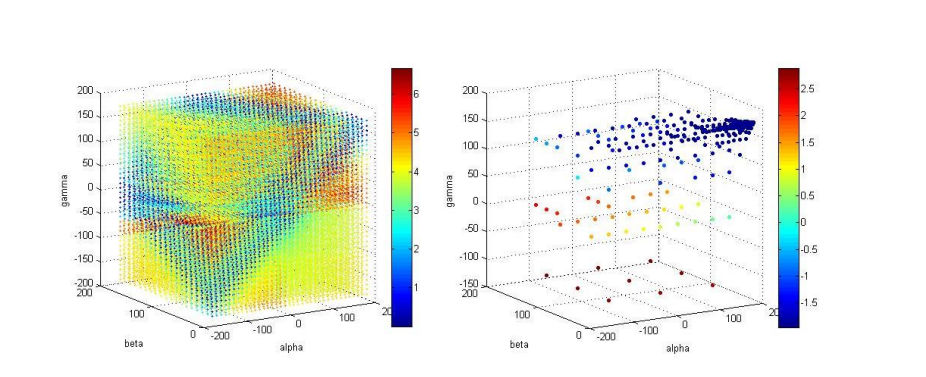In ‘Build Orientation Optimization for Strength Enhancement of FDM Parts Using Machine Learning based Algorithm,’ authors Manoj Malviya and K.A. Desai explore a new method for controlling anisotropy and thus, mechanical properties in FDM parts. With machine learning, they were able to control optimization frameworks further and choose suitable build orientations for FDM printed parts with a specific algorithm for maximizing the minimum Factor of Safety.
While the authors realize the many benefits—and ongoing success—with 3D printing, they also have a realistic view regarding the current limitations and potential for defects related to issues with layers and stair-casing effects, build direction, support structures, and more. Because of the layering approach, the researchers also point out the potential for impact on:
- Build time
- Surface quality
- Amount of support material required
- Geometrical accuracy
- Overall cost
- Material strength
“It has been observed that the stair-casing effect is largely dependent on the component geometry and building orientation,” stated the researchers. “The amount of support structure required for building of the component is decided based on the choice of building orientation and thereby influences the total build volume, build time, post-processing time and overall cost. It has been observed that the thermal distortion is affected by the build direction for metal additive manufacturing.”
Layering is also often responsible for anisotropy in ABS parts fabricated on FDM 3D printers—demonstrating that parts are stronger when orientation of the build and load are aligned with material fibers. In setting build orientation, the research team studied mechanical behavior, realizing that strength relies on hardware, materials, settings, and even environmental surroundings. For this study, the scientists create a framework meant to prevent failure through understanding the minimum FoS and taking maximum stress failure theory into account. They also used a ‘hybrid approach’ in the form of an analytical algorithm, with FEM simulations speeding up optimization significantly.
Five test cases were created to confirm the algorithm, with data allowing for calibration of the virtual simulation model.
“Once calibration is achieved, virtual physics-based model is simulated over the entire design space generated using various methods e.g. ANOVA, 2-factorial design, brute force, FEM etc.,” stated the researchers. “The present study uses a hybrid approach combining brute force and FEM for this purpose.”
Bayesian optimization offers a streamlined way to fix any optimization issues, treating objective function as a random function.
The goal in this study was to create better ways to fabricate components, along with facilitating physical validation and intuitive optimal build orientation. The second test case served as a modified version of the first, but with greater complexity in the part created. Results showed the influence of loading conditions on build orientation—as shown by their framework. They also realized that a ‘deep neural network’ could be created for producing accurate ANN models.
“The proposed methodology has been implemented in the form of an integrated computational model that determines optimal building direction for known loading and boundary conditions,” concluded the researchers overall. “A set of computational and experimental studies are conducted for sample components to determine optimal building direction using proposed algorithm. It has been observed that the optimal building direction has significant impact on load withstanding abilities of 3D printed components.”
Enhancing 3D printing techniques is a popular endeavor for researchers around the world today, whether in refining FDM printing speeds, creating new materials for SLA, or focusing on DLP printing. What do you think of this news? Let us know your thoughts! Join the discussion of this and other 3D printing topics at 3DPrintBoard.com.
[Source / Images: ‘Build Orientation Optimization for Strength Enhancement of FDM Parts Using Machine Learning based Algorithm’]
Subscribe to Our Email Newsletter
Stay up-to-date on all the latest news from the 3D printing industry and receive information and offers from third party vendors.
Print Services
Upload your 3D Models and get them printed quickly and efficiently.
You May Also Like
3D Printing News Briefs, July 2, 2025: Copper Alloys, Defense Manufacturing, & More
We’re starting off with metals in today’s 3D Printing News Briefs, as Farsoon has unveiled a large-scale AM solution for copper alloys, and Meltio used its wire-laser metal solution to...
3DPOD 260: John Hart on VulcanForms, MIT, Desktop Metal and More
John Hart is a Professor at MIT; he´s also the director of the Laboratory for Manufacturing and Productivity as well as the director of the Center for Advanced Production Technologies....
3D Printing News Briefs, June 28, 2025: Defense Accelerator, Surgical Models, & More
In this weekend’s 3D Printing News Briefs, 3YOURMIND was selected to join an EU Defense Accelerator, and PTC has announced model-based definition (MBD) capabilities within Onshape. Finally, a study out...
EOS in India: AM’s Rising Star
EOS is doubling down on India. With a growing base of aerospace startups, new government policies, and a massive engineering workforce, India is quickly becoming one of the most important...




































